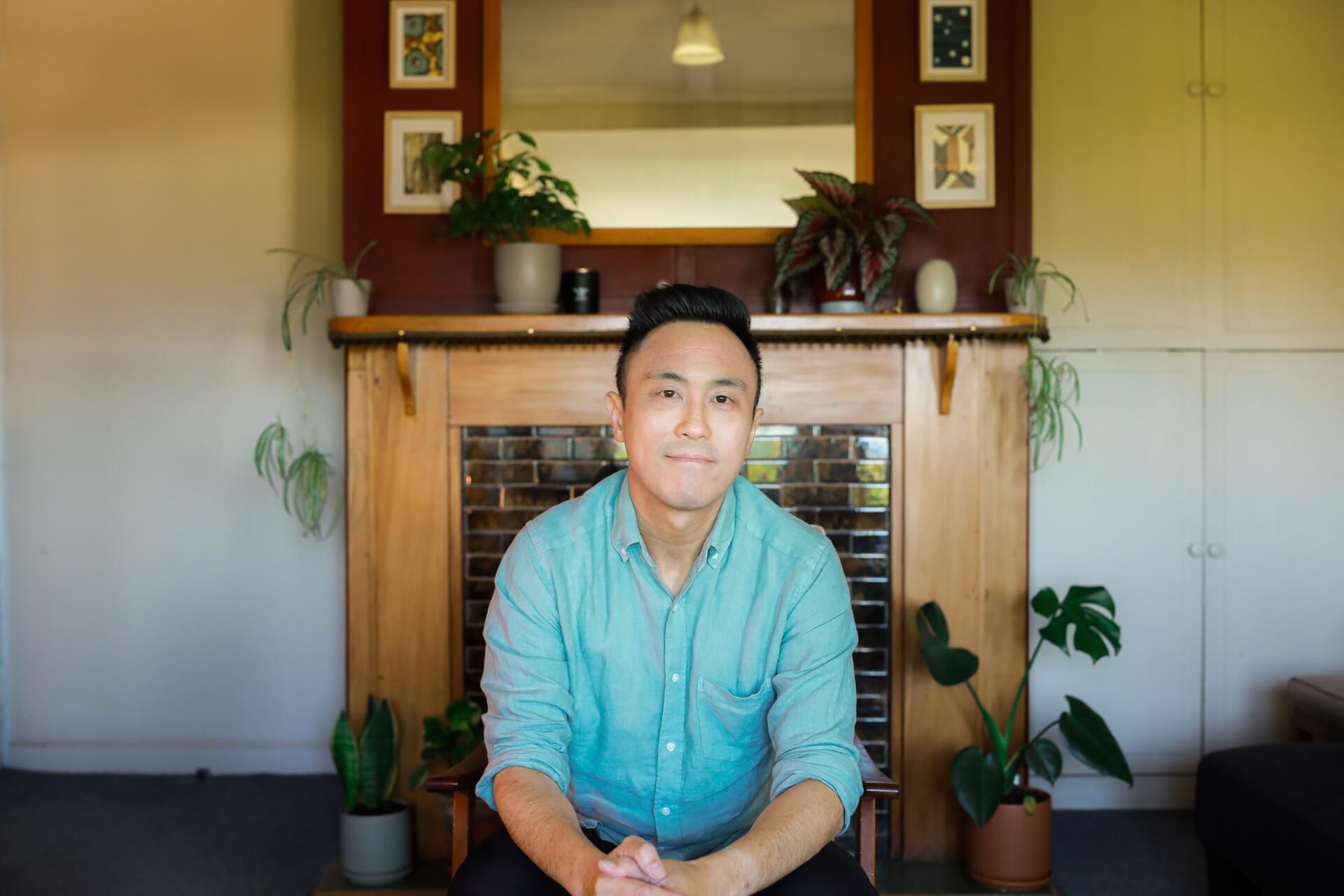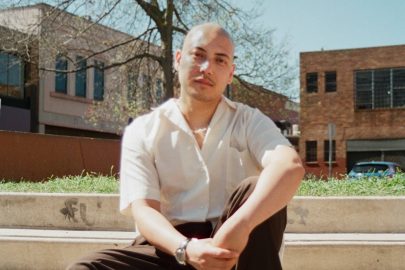Jul 5, 2022 Books
The title of Chris Tse’s third collection of poetry, Super Model Minority, is a nod to the term ‘model minority’, coined in 1966 by American sociologist William Petersen. Popularised over the last fifty years, model minority has typically referred to East Asian pocket communities who are praised as being particularly adept at assimilating into their dominant white settler societies, becoming “models” for how other races should behave.
Overall deference to whiteness is seen to neutralise an East Asian’s threat to the JENGA blocks of racial power, and the alluring promise of one day ascending into white- ness acts as the dangling carrot that can placate East Asians into accepting inferior status. But deep suspicion and fear that local Asian populations will try to gain a leg up on power over their white benefactors (read: overlords) remains. And so, the history of being readily scapegoated and scrutinised, across comment sections and talkback radio, continues. In Aotearoa, there is a growing number of East Asian populations sprawled across urban centres, generations, political interests and neighbourhoods. This makes for far more fear and uncertainty about the possibility for Asian containment.
Tse’s first book, How to be Dead in a Year of Snakes, visits the racially motivated murder of Cantonese goldminer Joe Kum Yung in 1905. Kum Yung was shot in the back by a white supremacist while walking down one of Wellington’s historical Chinatowns, to promote the crusade to rid New Zealand of its non-European immigrants. The murder shows us how the fragile social position of settler Chinese can shift, from a begrudgingly accepted source of labour, to a harbinger of doom that spells the end for white New Zealand, depending on how much of a threat to power they are perceived as being at any given moment.
Tse draws attention to how the language used to describe ethnic minorities such as Chinese New Zealanders in stories and media, has the power to directly impact the way in which they are treated by others:
the children play in their gardens,
warned to stay away from that street
where they will catch
incurable diseases or disappear
into some Chinaman’s shed
…
On Sunday
Lionel Terry went hunting
for a Chinaman.
In his new book, Tse connects the historical trauma of racial violence as depicted in his first book, against the ways that Chinese people living in Aotearoa possess a haunting hyper awareness of who they are and where they belong now: “We buried our dead but we didn’t bury the causes of their deaths — and therein lies the seeds of our predicament.”
Constant alertness to minute shifts in how others perceive you is a classic trauma response, and remains one of the hallmarks of living as an East Asian in white New Zealand. Being routinely excluded from Pākehā society is why we need more poets like Tse being published in the first place. But being too visible in the wrong setting, can get you, worst-case, murdered and, best-case, verbally abused, so voilà, the conundrum.
Torn between visibility and invisibility, to be a supermodel is to live as an exception, to desire yourself so admirably clean that no one could ever hurt nor accuse you. Pursuing the protection of being cherished means making peace with the follies of being a celebrity; that the more eyes you have on you, the stronger the likelihood that one of those eyes may belong to a sniper. As Tse puts it, “I’m not here to deny a white poet their place on the shelf — I’m here to slip my voice into their ear just to see which weapon they reach for.”
This is the world we live in, as defined by Tse — an exhaustive world of endless scroll, buried in screenshots, stereotypes, sweat and online avatars, in which one can construct and dismantle identities through the deceptive murk of self-perception, fetishisation, riot and subjugation. “Where do I have to stand to be seen?” asks Chris Tse to the void, speaking to the immigrant child’s amnesiac identity, the confusion and casualties caused from acclimatising to an Othered gaze.
In the first half of Super Model Minority, Tse shows the power of returning a person’s gaze through metaphor and satire. White men as a subject receive the majority of Tse’s voraciously returned scrutiny, including his excellent poem Abandoned acceptance speech for outstanding achievement by a Chinese New Zealander in the field of excellence, where Tse becomes in on the joke that the (let’s assume Pākehā) audience has told him, about his contributed merits and provided value to society.
Tse re-emphasises the world of smoke and mirrors that he navigates, speaking of his desire to do his best “to keep my reflection in the mirror truthful”. Here he articulates how impossible it can feel to really see yourself absent from the perception of others. To be an Asian ‘minority’ is once again to embrace contradiction, there being so many Chris Tses in the world that Chris Tse could be, a popstar, a doctor, poet, beloved icon, victim of a hate crime, LGBT fashionista, a New Zealander, an Asian, one in a billion.
Punctuation reinforces this multiple-realm state of being. The jùhào or Mandarin full stop is an excellent example of how punctuation can be used to, well, punctuate for effect, the circle being used as both visual accessory and glue. Using ‘ 。’ instead of ‘.’ shows a glassy eye without a pupil, that is foggy in its reflection. Tse code-slips his writing between language systems into a space where there’s potential to be more than one thing, and room for personal interpretation.
But reclaiming the gaze isn’t always easy, and there’s grief that stirs behind comedic effect. Being gaysian is confronting terrain, and all that glitters like a supermodel’s contour is still not exempt from violence. Vexillology, one of the later segments of the book, interrogates the danger of belonging to a symbol or a flag. This is especially resonant in situations when last name tastes of foreign fabric, or when intra-community exclusion marks you as an unembraced threat even in spaces of supposed acceptance.
Each poem in Vexillology (meaning ‘the study of flags’) connects to the eight colours painted on the original LGBT pride flag, and the meanings they were chosen to represent. This is one of my favourite sections, where the poet relaxes into his prose, and rapturously commits to death drop lines, magnetic and as malleable as liquid, using the colluding properties of art and colour to help shape and reveal his deft and worldly perceptions. The line “There were times I thought I’d die under the weight of a rainbow” is a strike through the heart.
In the opening poem of the publication, Tse resigns himself to the fact that “Perhaps I don’t belong in utopia”. Perhaps he doesn’t, perhaps no one does — utopia not being something that we will find in our current political climate, nor through history. But Super Model Minority, in all its moments of grittily-earned clarity, also exemplifies the beauty that Tse has learned to find through existing as a queer person of colour. The survival strategies he has grown to withstand an apocalypse include poetry, glamour, and the understanding that life for many communities has always been about learning to exist under non-utopic conditions.
According to the blurb (“It’s the end of the world and Chris Tse has lost his shit”), calling these times the end of the world isn’t that far of a reach. That rings true for most people with an account on Twitter. What I’ve gleaned from this book is that there’s no such thing as a final ending, which is direly depressing, as no thinkpiece or return blow will ever deliver death to racism, and bad things do continue to happen. Conversely, it’s also hopeful, because we’re always adjusting and recalibrating the scope of our vision: learning to make out shapes in the dark, our own reflections, the line of a horizon. Whose utopia are we fighting for anyway? Super Model Minority is a fantastically smart read that’s ambitious in its range, and makes the end of this world as we know it not feel like it has to be a bad thing.
Super Model Minority, Chris Tse
Auckland University Press, 120pp, $24.99
–






